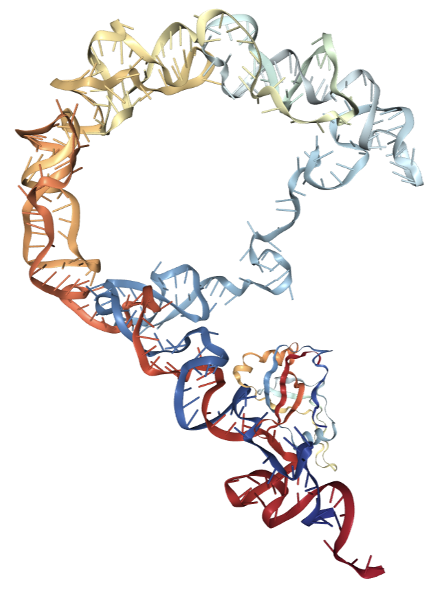RNA World: Helping Students Gain an Edge in a Rapidly Expanding Industry
In most biology classes, the discussion around RNA goes something like this: “DNA makes RNA. The three types of RNA are mRNA, tRNA, and rRNA. These RNA molecules make proteins. Oh, and there are some other kinds of RNA, but we’re not going to get into that.” Too many biology majors can likely remember this exact lecture. Maybe, if they were lucky, they got to learn about lncRNAs or snRNAs.
But the NC State Biotechnology Program has a course to remedy this gap in student’s learning. RNA World, designed and taught by Dr. Arnab Sengupta, covers both the broader topic of RNA, and the specifics of each type. It also includes a lab portion which introduces students to different techniques used to study RNA. “The labs are very specific in that they focus on RNA structure,” Dr. Sengupta said, “the lectures cover everything else.” He uses a textbook – RNA Worlds: From Life’s Origins to Diversity in Gene Regulation – for basic information, but he also uses a lot of recent publications to supplement this. But the textbook itself is really just a collection of review papers, which is really a testament to how quickly the field is developing.

Dr. Sengupta built the class around his research interests. Before this, he was a research postdoc at UNC-Chapel Hill, where he focused on translation: the process through which proteins are made. Specifically, he studies how antibiotics affect the ribosome, the molecular machine that assembles proteins using the genetic code in the mRNA. “I’m interested in knowing what the structural communications are in the ribosome that are affected by antibiotics,” he explained.
A lot of his research is concerned with the structure of RNA, so that is what the lab component focuses on. “This course is what we call a CURE,” he said, “or a Course-based Undergraduate Research Experience.” While in the lab, the students perform actual experiments whose results all contribute to original research. This work is backed up by “[providing] a lot of context in the lecture sessions.”
“In the lectures, we really cover the gamut of RNA biology topics,” Dr. Sengupta said. “We cover RNA fundamentals, including base pairing, and structure and function,” he explained, “and we also cover the evolutionary concept of the RNA world hypothesis.” According to Dr. Sengupta, there’s an evolutionary concept that RNA actually came before DNA. They’re able to pass on genetic information, as in certain viruses, but they are also able to catalyze biochemical reactions like enzymes. Because of this, “they’re an evolutionary wonder.”
The labs teach a wide range of skills, including wet lab techniques and computational processes. In a normal year, students would use computational programs to analyze and assess the data they collect, but now that classes are fully online, all of the lab component is data analysis and higher-order functional interpretation. “We actually have a lot of data collected from previous projects, including data from public repositories submitted from previously published research,” Dr. Sengupta said, “so students analyze next-generation sequencing data using the Henry2 high-performance computing cluster at NC State.” He says that it’s actually a “really exciting part of our learning. Students get a really robust training in computational data analysis.”
Most drugs and therapies currently target DNA or proteins, but it’s becoming increasingly more clear that RNA plays a much bigger role than previously imagined. “RNA is becoming much more important in biotechnology and therapeutics,” Dr. Sengupta said. For example, the COVID-19 vaccine currently being developed by Moderna is an mRNA molecule. “It’s going to deliver mRNA to patients, which will then be translated into protein antigens and ultimately be used to produce antibodies capable of targeting the virus,” he explained, “So it’s going to be the first mRNA-based vaccine to be released on such a large scale.” The field is still at its nascency but rapidly expanding, so this is the perfect time to begin teaching students the skills they need to navigate it.
RNA is becoming much more important in biotechnology and therapeutics
Dr. Arnab Sengupta
Though the computational work in the lab portion can be “intimidating” to students at first, Dr. Sengupta said that he tries to make it as accessible as possible for students who have no previous experience. “I tried to design the course with a lot of scaffolding, using a rigorously tested analysis workflow, to help students as they learn,” he said. “I don’t use traditional exams, so I have several project goals peppered throughout the course to assess and build knowledge,” he said. If you want an introduction to the complicated and fascinating field of RNA, RNA World is the class for you.
Link to course list: https://biotech.ncsu.edu/spring-2021/